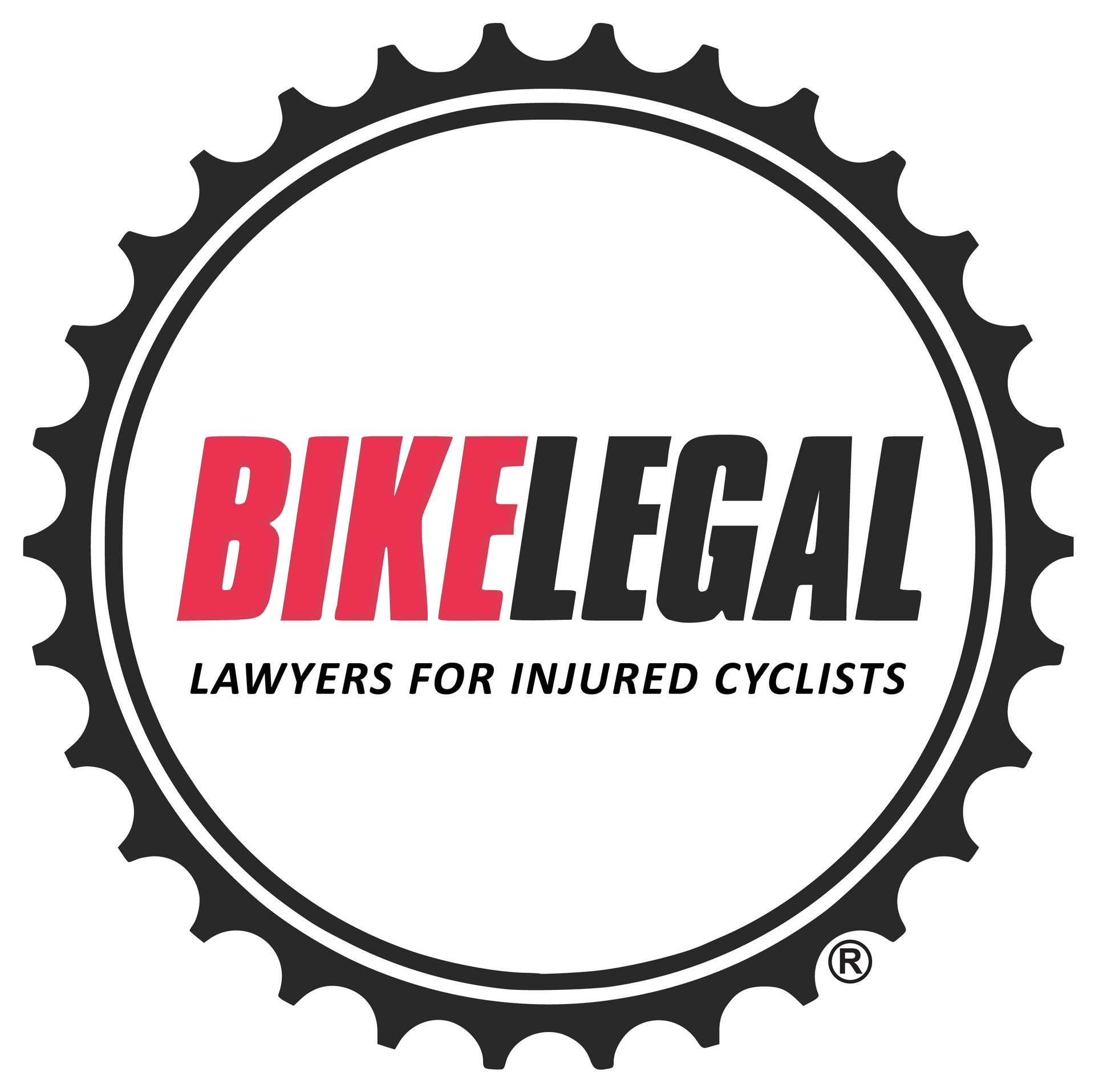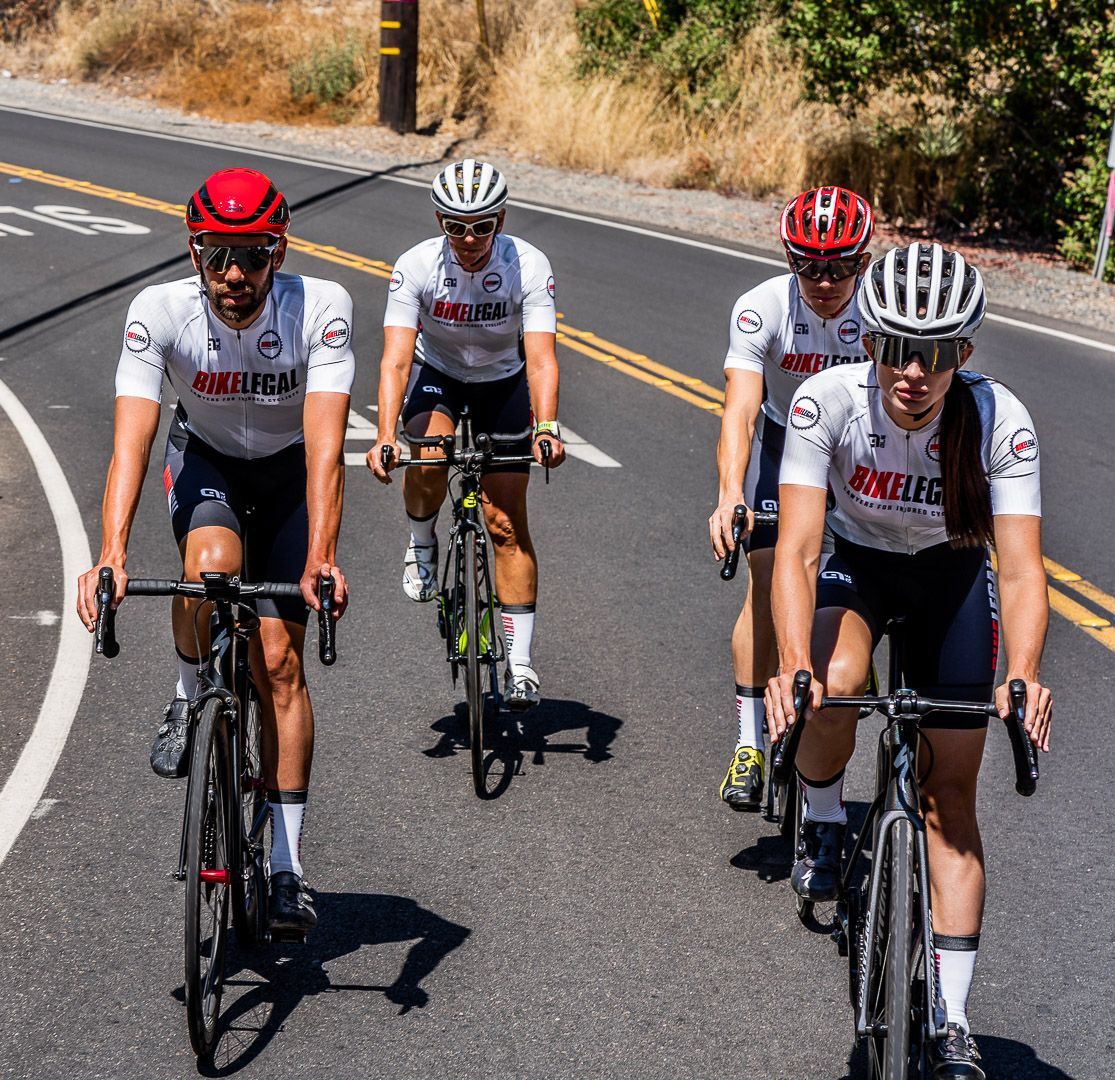11 Common Myths About Cyclists That Drivers Need to Know
Follow us on
social media!
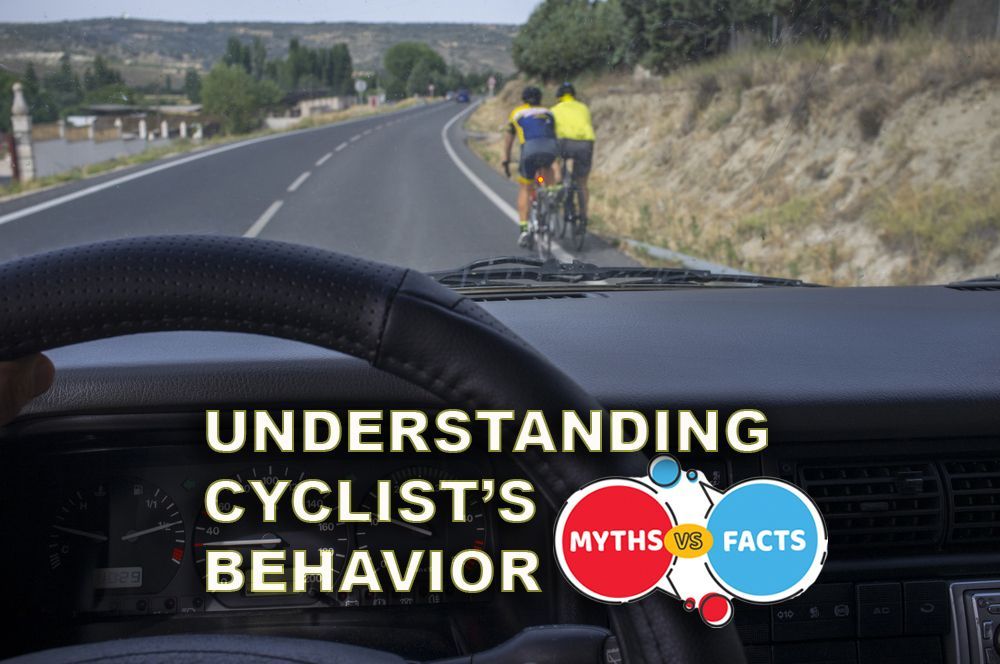
Road rage between cyclists and motorists is a growing and dangerous issue as both groups fight over rights to the road. This tension often stems from a lack of understanding about cyclists' behaviors and legal rights.
This article addresses the 11 most common myths drivers have about cyclists. It provides clear facts and legal insights to educate the public on cycling and the importance of sharing the road respectfully.
In the video below, Phil Gaimon tackles the most frequent complaints drivers have about cyclists. He clarifies the common misconceptions and the realities of road sharing between motorists and cyclists. Watch as Phil breaks down these issues and provides the truths and laws behind them, offering insights to foster a safer and more harmonious road environment.
Myth 1: Cyclists Don’t Pay Road Tax, Therefore, Don’t Belong on the Road
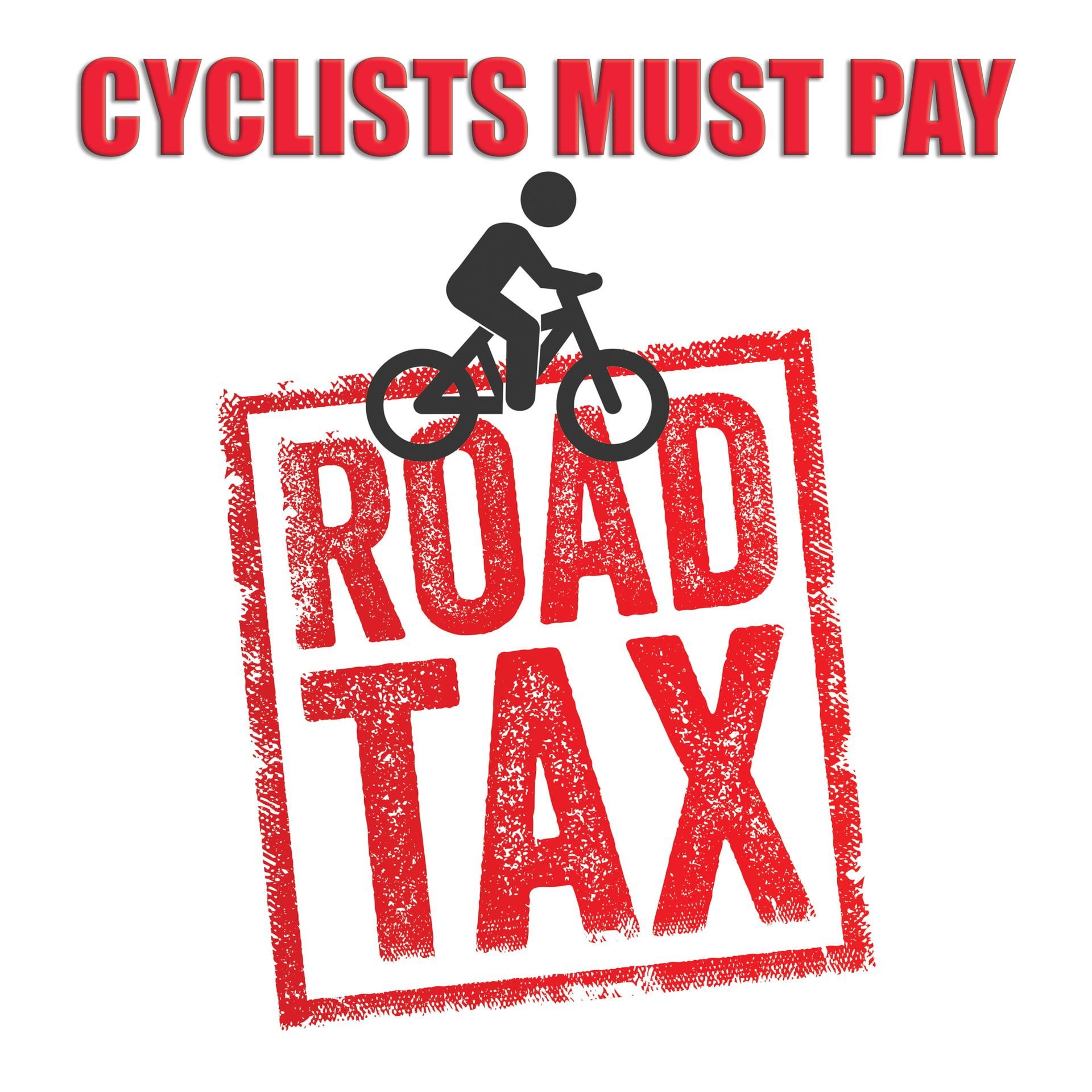
The term "road tax" is a common misconception. There is no dedicated road tax in the US as it existed in the past. This misunderstanding often leads to the incorrect belief that cyclists do not contribute to the maintenance and development of road infrastructure.
In reality, the funding for road infrastructure comes from a combination of vehicle registration fees, fuel taxes, and other sources.
- Vehicle registration fees and taxes: These are the primary sources of funding for road infrastructure. Vehicle owners pay these fees and taxes, which contribute to the Highway Trust Fund and state budgets for road maintenance and development.
- Fuel taxes: This includes both federal and state taxes on gasoline and diesel. The federal fuel tax is currently 18.4 cents per gallon for gas and 24.4 cents per gallon for diesel. States add their own taxes, which can vary significantly.
For a comprehensive understanding of how these funds are allocated and utilized, explore the U.S. Department of Transportation's detailed breakdown of Highway Trust Fund contributions.
How US roads are funded
US roads are primarily funded through a mix of these sources:
- Federal funding: The Highway Trust Fund, which receives revenue from federal fuel taxes, is a significant funding source for the nation's highways and transit systems.
- State and local funding: States and municipalities also contribute to road funding through their own fuel taxes, vehicle registration fees, tolls, and sometimes general tax revenue.
Contribution of cyclists
Even though cyclists do not directly pay vehicle registration fees or fuel taxes, they still contribute to the funding of roads through other taxes, such as
- Income tax
- Sales tax, and
- Property tax.
Moreover, most cyclists also own vehicles and thus pay vehicle registration fees and fuel taxes, further contributing to the road infrastructure.
Myth 2: Roads Are for Cars, Not Bicycles
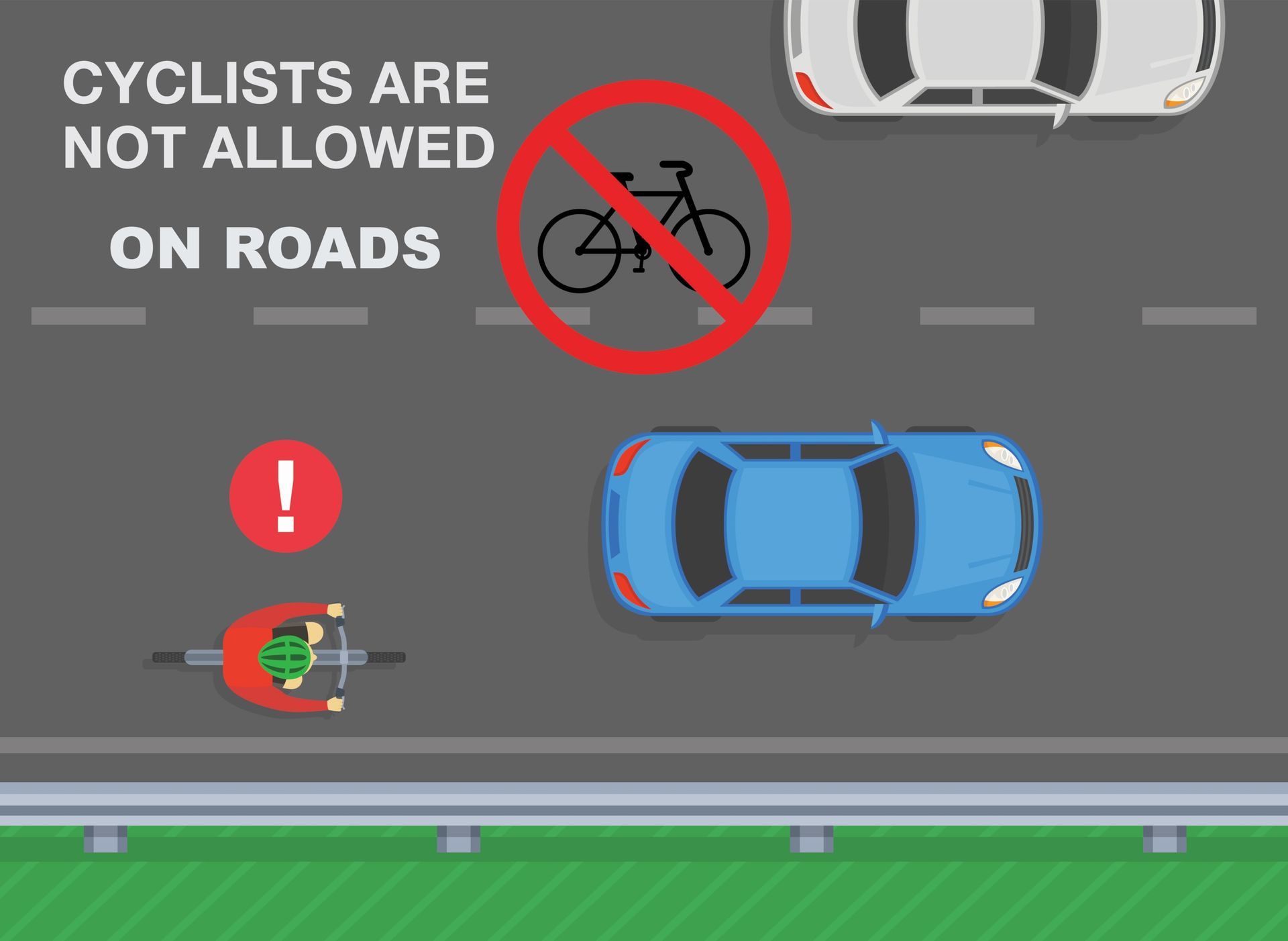
Another prevalent myth is that roads are meant exclusively for cars and that bicycles are not allowed on them. However, the historical context of road design often surprises those who believe this.
In the late 19th and early 20th centuries, cyclists spearheaded the "Good Roads Movement" in the United States. This advocacy led to the paving and improvement of roads, which initially aimed to make cycling smoother and safer.
It wasn't until the widespread adoption of automobiles that the perception shifted to view roads primarily as car infrastructure. Recognizing this history highlights the enduring legitimacy of bicycles as road users.
Legal rights and environmental benefits of cyclists to use the road
- Legal recognition: In most places such as the US, EU member countries, and Australia, cyclists have the same legal rights and responsibilities as motorists. Traffic laws typically recognize bicycles as vehicles, granting them the right to use public roads (excluding highways and expressways where cycling is explicitly prohibited for safety reasons).
- Bicycle infrastructure: Many cities and municipalities have specific bicycle lanes and adequate infrastructure to support and encourage safe riding. These lanes are part of the broader transportation network, emphasizing the legal inclusion of bicycles on the road.
- Reduced emissions: Cycling is a zero-emission mode of transportation. By choosing to cycle instead of driving, individuals contribute to reduced air pollution and lower greenhouse gas emissions, benefiting the environment.
- Decreased traffic congestion: Bicycles take up significantly less space than cars, leading to less road congestion. Increased cycling can reduce traffic jams, making commuting faster and more efficient for everyone.
- Health benefits: Cycling promotes physical health and can lead to lower healthcare costs and a healthier population overall.
Myth 3: Cyclists Need to Pay Registration and Insurance (just like drivers)
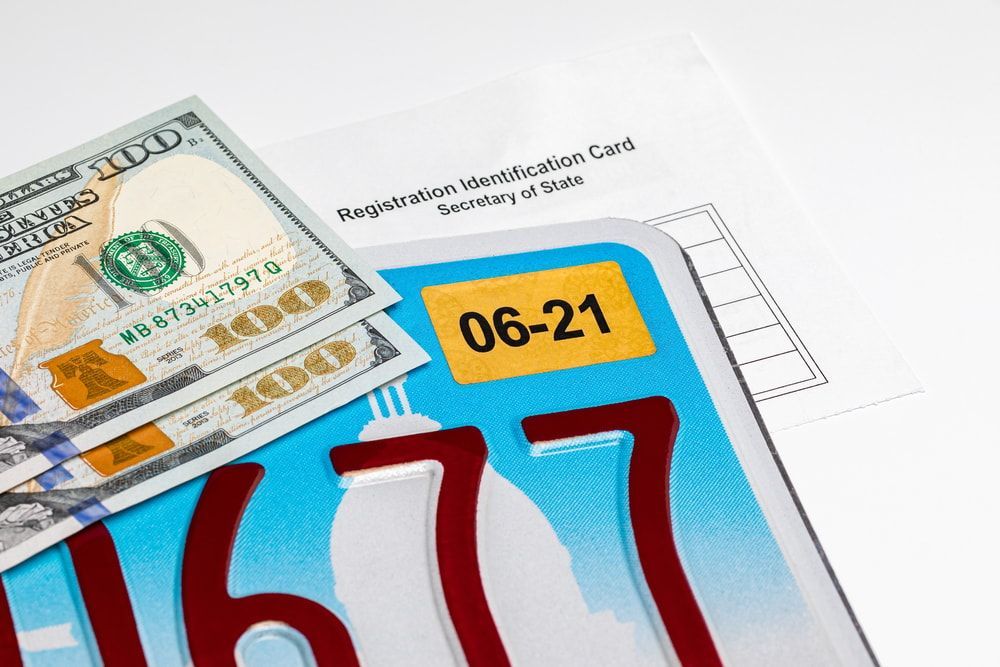
A common argument against cyclists is that they should be required to pay for registration and insurance, just like motor vehicle drivers, to contribute their fair share to road maintenance and infrastructure.
To understand why this argument doesn't hold up, it's essential to look at the differences between bicycles and motor vehicles, the benefits of cycling, and recent legislative changes.
Differences between bicycles and motor vehicles
- Impact on infrastructure: Compared to motor vehicles, bicycles cause minimal wear and tear on roads. The weight and speed of cars and trucks significantly contribute to road degradation, whereas bicycles have a negligible impact.
- Safety and liability: Because of their size, speed, and weight, motor vehicles have a much higher potential for causing severe damage or injury. This risk necessitates the need for insurance and registration for motor vehicles.
Legislative support for cycling: California's OmniBike Bill
The OmniBike Bill, officially known as Assembly Bill 1909, was a significant legislation passed in California in October 2023. This bill aimed to promote cycling as a sustainable mode of transportation by removing unnecessary barriers and updating outdated regulations.
Key provisions of the OmniBike Bill are:
- Bikes on walk signals: Cyclists can cross intersections using pedestrian walk signals, which gives them a head start and makes them more visible to turning vehicles.
- Change lanes to pass: Drivers must change car lanes when passing a bicyclist if it is safe to do so, replacing the previous 3-foot passing rule. This change aims to reduce near misses and collisions by providing a more precise directive for motorists.
- Elimination of bicycle licensing: The bill prohibits cities and counties from enforcing bicycle licensing laws, which have been criticized for being used to harass cyclists, particularly people of color.
For further details on this progressive legislation, read our detailed analysis of the OmniBike Bill on the Bike Legal blog. For additional context on how this integrates with existing laws, read our blog post about the 3-foot passing law and its implications for cyclists and drivers.
E-Bike regulations in California
According to California Vehicle Code 312.5, e-bikes are primarily regulated like traditional bicycles. Specific distinctions determine their permissible usage, speed limits, and required safety measures.
E-bikes in California are categorized into three classes:
- Class 1: Equipped with pedal assist only, these e-bikes do not have a throttle and can reach a maximum assisted speed of 20 mph.
- Class 2: Class 2 e-bikes can be powered solely by a throttle and have a maximum speed of 20 mph.
- Class 3: These e-bikes are equipped with a pedal assist system that only activates when the rider is pedaling and must include a speedometer. They can achieve a maximum assisted speed of 28 mph.
E-bike regulations:
- Helmet requirements: All individuals under 18 must wear a helmet while riding any type of bicycle, motorized or not. Additionally, helmets are mandatory for riders of all ages operating Class 3 e-bikes.
- Age restrictions: Operating a Class 3 e-bike is restricted to individuals aged 16 and above.
- Usage restrictions: Class 1 and 2 e-bikes are permitted on bicycle paths unless local laws state otherwise. Class 3 e-bikes are not allowed on bicycle paths unless the path is adjacent to a roadway or local authorities explicitly allow it.
For a thorough overview of e-bikes, including types and legislation, read our comprehensive guide: Everything You Need to Know About E-bikes.
Myth 4: Cyclists Need to Obtain a Bicycle License
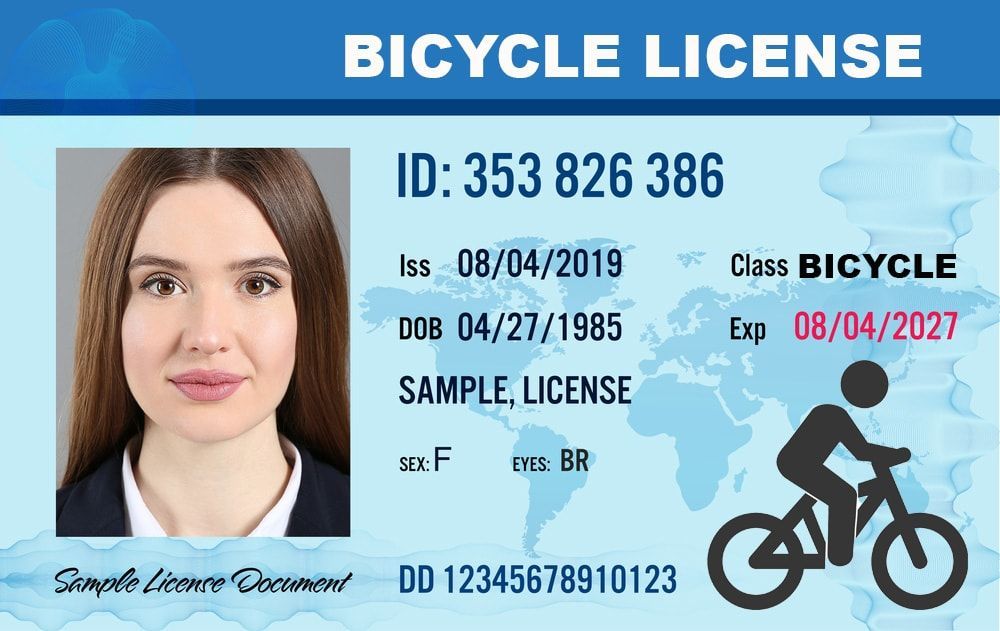
The idea that cyclists must obtain a bicycle license is a common misconception. Licensing cyclists is not a common practice and has been widely deemed impractical and unnecessary for several reasons.
Background history
Bicycle licensing schemes have been tried in various cities and regions, particularly in the mid-20th century. These programs aimed to track bicycle ownership, ensure bikes were not stolen, and sometimes to regulate cyclists' behavior on the roads.
The administrative cost of implementing and maintaining a bicycle licensing system often outweighed the benefits. Cities like Los Angeles found that the revenue generated from bicycle licenses was insufficient to cover the program's costs, including enforcement and administration.
Policy shifts and elimination
Many cities and countries eventually abandoned bicycle licensing due to the above-mentioned reasons. For instance, Los Angeles repealed its bicycle licensing requirement in 2009. The system was deemed ineffective and costly to enforce. Additionally, it was found that the licensing did not contribute to improved safety or a reduction in bike theft.
The focus shifted towards encouraging cycling as a healthy and environmentally friendly mode of transportation. Licensing was seen as a deterrent to cycling, which conflicted with public health and environmental goals.
Myth 5: Bicycles Belong on the Sidewalk
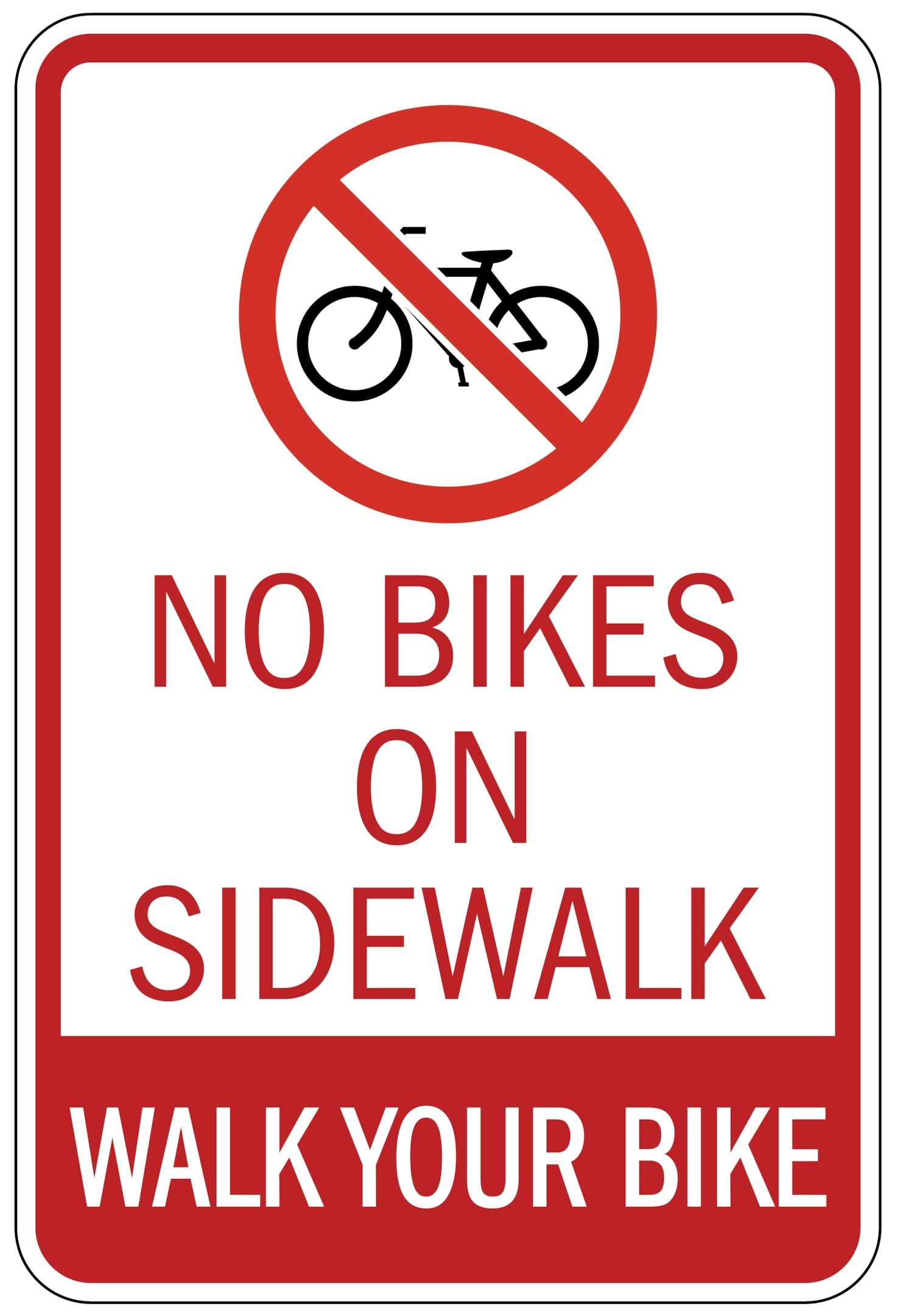
Many drivers believe that bicycles should stick to the sidewalks, thinking it’s safer for both cyclists and motorists. However, this common misconception overlooks several important factors:
- Legal restrictions: In many areas, bicycling on the sidewalk is illegal, especially in business districts. Local laws often mandate that bicycles should be ridden on the road, where cyclists are considered vehicles with the same rights and responsibilities as motor vehicles.
- Pedestrian safety: Sidewalks are designed for pedestrians, not for fast-moving bicycles. Mixing bicycles with foot traffic can lead to accidents, especially in crowded urban areas. Pedestrians, including children and the elderly, are at a greater risk of collisions when bicycles use the sidewalk.
- Visibility issues: Cyclists are more visible to drivers when they are on the road. On the sidewalk, they can be obscured by parked cars, trees, and other obstacles, making it difficult for drivers to see them when turning or crossing intersections.
- Predictability: Motorists expect to see other vehicles, including bicycles, on the road. When cyclists ride hard on the sidewalk, they can appear suddenly at crosswalks or driveways, catching drivers off guard and increasing the risk of accidents.
- Road design: Roads are designed to accommodate various types of vehicles, including bicycles. Many roads have bike lanes or designated cycling paths that provide a safer space for cyclists. Even without these lanes, roads are typically a better option than sidewalks.
Myth 6: Cyclists Must Always Stay in the Bike Lane
Another common misconception drivers have is that cyclists must legally stay in protected bike lanes. While bike lanes are designed to provide a safer space for cyclists, there are several situations where it is not only permissible but also safer for cyclists to leave the bike lane.
Why cyclists might leave the bike lane:
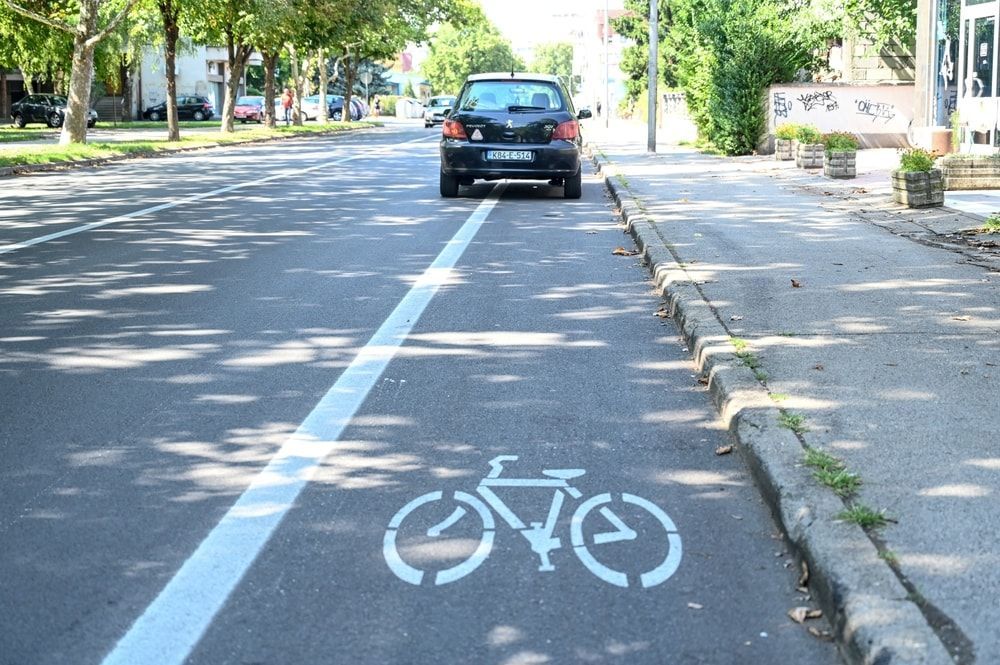
- Obstructions: Parked cars, debris, or other obstacles can block bike lanes. In such cases, cyclists need to merge into the traffic lane to avoid these hazards.
- Turning: When cyclists need to make a left turn, they must leave the bike lane and move into the appropriate lane to position themselves correctly for the turn.
- Avoiding dooring: Riding too close to parked cars can be dangerous if a car door suddenly opens. Cyclists often need to leave the bike lane to maintain a safe distance from parked vehicles.
- Road conditions: Potholes, broken glass, and other road imperfections can make bike lanes unsafe. Cyclists may need to veer into the main traffic lane to avoid such dangers.
- Speed matching: On roads where the bike lane is narrow, or the cyclist is moving at a similar speed to the traffic, it may be safer for the cyclist to integrate with traffic to maintain a steady and predictable flow.
Myth 7: Rolling Through Stop Signs or Biking Past a Red Light Is Never Allowed

Many people believe that cyclists must always come to a complete stop at stop signs and red lights, just like motor vehicles. However, this is not entirely accurate, as some states have enacted laws that permit cyclists to treat stop signs and red lights differently under certain conditions.
If you have ever been stuck behind a cyclist at a stop sign, you know that it takes them a bit longer to start moving again. Allowing bicyclists to proceed cautiously provides continuous momentum for everyone.
Idaho Stop & similar laws
The Idaho Stop Law, enacted in Idaho in 1982, allows cyclists to treat stop signs as yield signs and red lights as stop signs. This means cyclists can roll through stop signs after slowing down and ensuring the intersection is clear of vehicles and pedestrians.
The "Red light as stop" variation is a subset of the Idaho Stop law, where cyclists can treat red lights as stop signs. This means that after coming to a complete stop if the road is clear of traffic and pedestrians, cyclists can proceed through the intersection before the light turns green.
One of the reasons for the Red light as stop law is that traffic light sensors embedded in the road surface do not pick up a bicycle. Therefore, cyclists can get stuck waiting a long time for a vehicle to arrive and trip the sensor.
Currently, more than a dozen states have implemented the Stop as Yield law, and the list is growing. These laws acknowledge the unique dynamics of cycling and aim to enhance safety and efficiency for cyclists and motorists alike.
Explore our detailed guide, Understanding the Idaho Stop: Cycling Laws That Enhance Safety and Efficiency, to gain a deeper understanding of how these laws apply across different states and their impact on cyclists and traffic flow.
Benefits and safety implications
- Safety benefits: Studies have shown that these laws can lead to safer outcomes for cyclists. For instance, a UC Berkeley study found a 14.5% decline in bicycle injuries following the adoption of such laws. By minimizing unnecessary stops and starts, cyclists are less exposed to potential conflicts with motor vehicles. Furthermore, the laws encourage cyclists to pay close attention to their surroundings and make informed decisions at intersections.
- Traffic efficiency: Allowing cyclists to roll through stop signs helps in maintaining the flow of traffic. When cyclists are forced to stop and start frequently, it can create delays not only for themselves but also for motor vehicles sharing the road.
Myth 8: Cyclists Are a Hazard to Themselves and Others
A common misconception is that cyclists are inherently hazardous on the roads. However, studies and statistics indicate that distracted driving is a significant cause of accidents involving cyclists.
Cyclists often become victims due to drivers not paying full attention to the road. It is crucial for both cyclists and drivers to adhere to safety practices to minimize risks.
Distracted drivers are the main cause of bicycle accidents
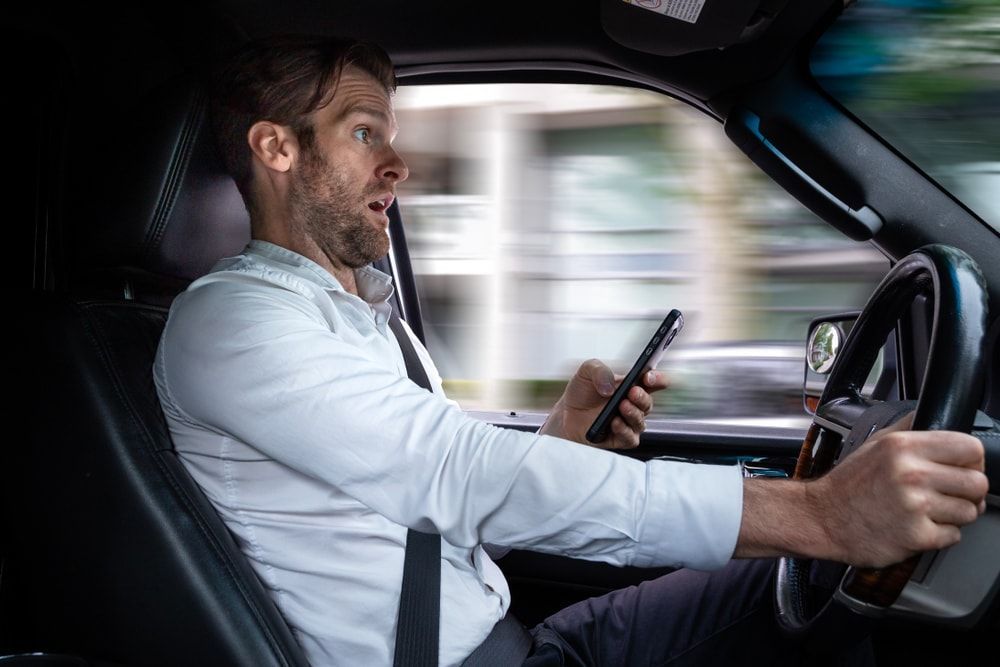
Contrary to popular belief, a vast majority of bicycle accidents are not caused by the cyclists themselves but by distracted drivers. Studies have shown that in many cases, collisions between cyclists and motor vehicles are primarily the fault of the motorist.
Distracted drivers pose a significant risk to cyclists. When drivers are inattentive, often due to activities like texting, eating, or using their phones, they increase the likelihood of accidents.
This issue is underscored by statistics from the National Highway Traffic Safety Administration (NHTSA), which reports that in 2022 alone, 3,308 fatalities were linked to distracted driving. This distraction is a leading cause of all types of vehicle collisions, including those involving bicycles.
Safety practices of responsible cyclists
Contrary to the myth, many cyclists follow stringent safety practices to protect themselves and others. These include:
- Wearing helmets: Helmets are a crucial safety measure, reducing the risk of head injuries in case of an accident.
- Using lights and reflectors: Especially at night or in low-light conditions, cyclists use lights and reflectors to make themselves visible to drivers.
- Obeying traffic laws: Responsible cyclists adhere to the same traffic rules as vehicles, stopping at red lights, signaling turns, and following road signs.
- Riding predictably: By riding in a straight line and avoiding sudden swerves, cyclists make their movements predictable to drivers, reducing the likelihood of accidents.
Foster mutual respect and proper road etiquette
Improving safety on the roads involves fostering mutual respect and understanding between cyclists and drivers. By promoting proper road etiquette and mutual respect, both drivers and cyclists can contribute to a safer environment for everyone.
Both groups can take steps to enhance road safety:
- Drivers: Stay alert, give cyclists enough space, and avoid distractions. Understand that cyclists have a right to share the road.
- Cyclists: Follow traffic laws, use designated bike lanes when available, and communicate intentions clearly to drivers.
Myth 9: Cyclists Should Always Ride Single File
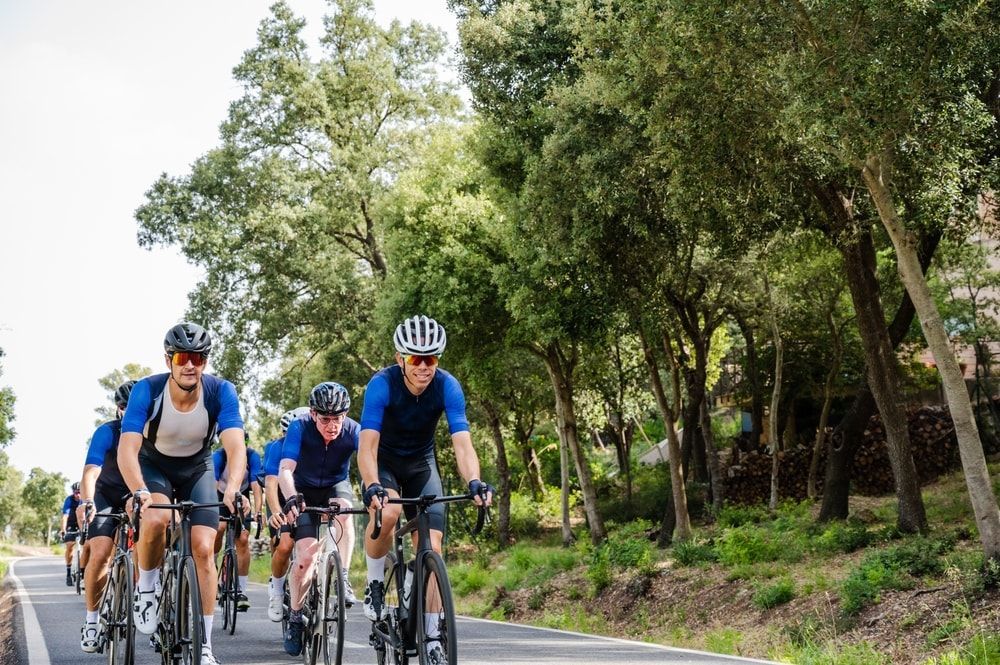
A common belief among drivers is that cyclists should always ride single file to avoid obstructing traffic and to be considerate of other road users.
To understand why this belief is not always practical or safe, it's essential to consider the legal allowances, safety, and visibility benefits of group riding.
Legal allowance for riding two abreast
Most jurisdictions legally allow cyclists to ride two abreast (side by side) on the road. This practice is not only permitted but often encouraged under certain conditions:
- Explicitly Allowed: 39 states explicitly allow cyclists to ride two abreast. However, in 21 of these states, cyclists must not impede traffic. For example, Massachusetts, New York, and Virginia require cyclists to ride single file when being overtaken by a vehicle.
- Conditional Allowance: Some states permit two-abreast riding only if it does not obstruct traffic. For instance, in Hawaii, cyclists must ride single file unless the bicycle lane is wide enough to accommodate side-by-side riding without impeding traffic flow.
- Road safety regulations: Cyclists must adhere to specific rules, such as moving to single file when being overtaken by faster vehicles, to ensure they do not cause undue obstruction.
Safety and visibility benefits of group riding
Riding two abreast can actually enhance safety and visibility for cyclists:
- Increased visibility: A group of cyclists riding two abreast is more visible to drivers than a single file line. This increased visibility can reduce the risk of accidents, as drivers are more likely to notice and accommodate the group.
- Reduced risk of overtaking incidents: When cyclists ride two abreast, it shortens the length of the line of cyclists, making it easier and safer for drivers to overtake. This setup minimizes the time drivers spend in the opposite lane when passing, reducing the risk of head-on collisions.
- Safety in numbers: Riding in pairs can provide a safety buffer for cyclists, protecting them from being squeezed off the road by passing vehicles. It also allows cyclists to communicate more effectively and respond quickly to hazards.
Myth 10: Drivers Have the Right to Honk or Yell at Cyclists Who Are in Their Way
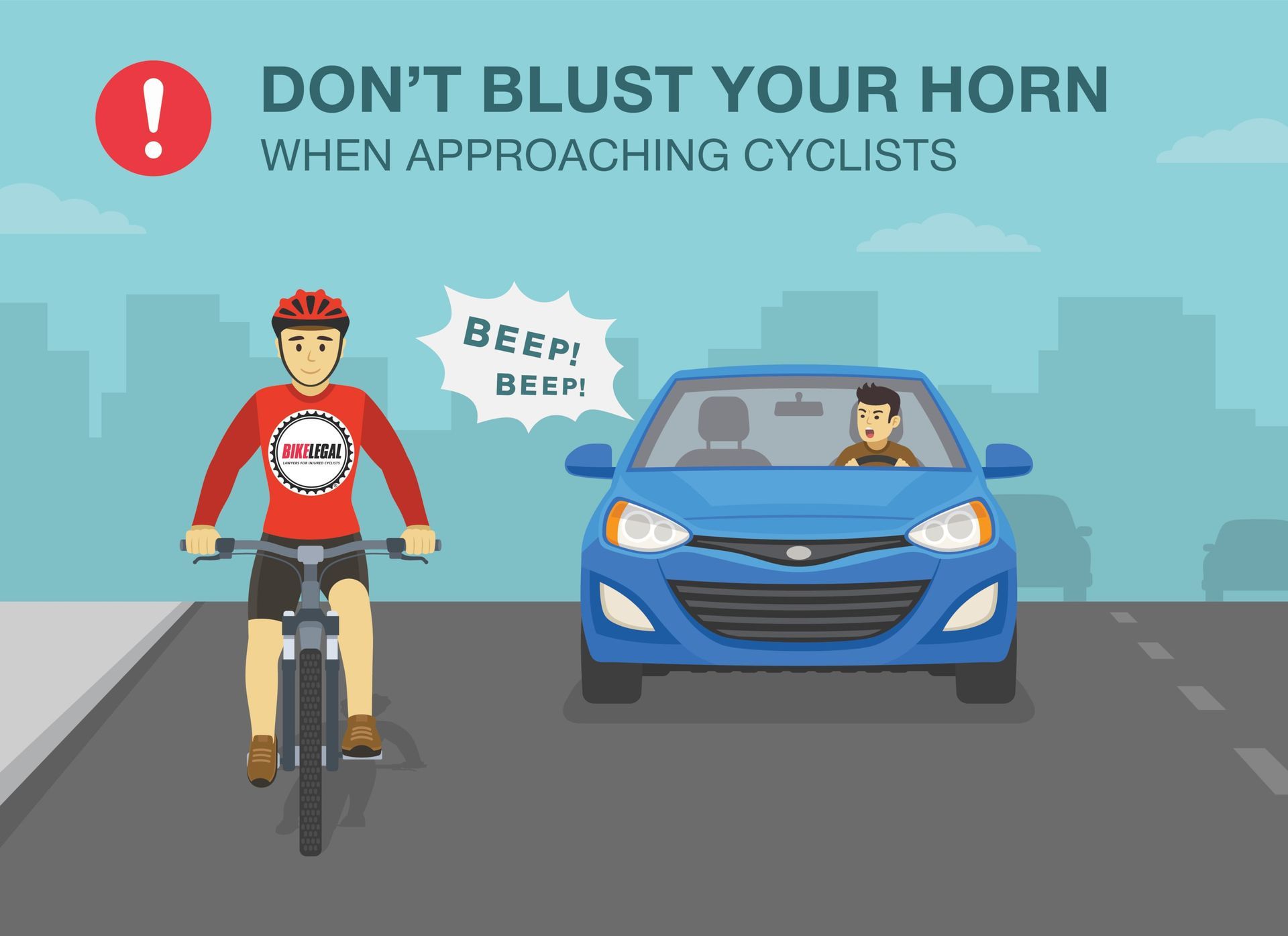
A common belief among some drivers is that they have the right to honk or yell at cyclists who are perceived as being in their way. This behavior is often justified by the notion that cyclists are slower and thus disrupt the flow of traffic.
Dangers and penalties of aggressive behavior
- Safety hazards: Honking or yelling at cyclists can startle them, potentially causing accidents. Sudden loud noises can lead to loss of control, swerving, or even falls, putting both the cyclist and others on the road at risk.
- Legal implications: In many jurisdictions, aggressive behavior towards cyclists, including unnecessary honking or shouting, can be considered harassment or even a traffic violation. Such actions can result in fines or other legal consequences for drivers.
- Harassment and traffic violations: In some areas, aggressive actions towards cyclists are classified under harassment or road rage laws. For instance, in California, a driver can be fined up to $1,000 for harassing a cyclist under the state's anti-harassment law .
- Unnecessary honking: Unnecessary use of the horn, which can be perceived as aggressive or intimidating, is often regulated. For example, in New York, unnecessary honking can result in a fine of up to $800-$2500 under the New York City Noise Code.
- Reckless driving: Aggressive behavior that endangers a cyclist can be categorized as reckless driving, which carries severe penalties. In Texas, reckless driving is punishable by a fine of up to $200 and/or imprisonment for up to 30 days.
Importance of patience and respect on the road
- Shared roadways: Roads are public spaces shared by various types of users, including cars, bicycles, pedestrians, and more. Recognizing that cyclists have the same rights to use the road is essential for promoting a safe and inclusive environment.
- Encouraging safe practices: Patience and respect from drivers can encourage safer cycling practices. When cyclists feel respected and safe, they are more likely to adhere to traffic rules and ride predictably.
- Reducing stress and road rage: Road rage and aggressive driving can escalate quickly, leading to dangerous situations. By practicing patience and showing respect, drivers can help reduce overall stress on the road, leading to a calmer and safer driving environment for everyone.
Myth 11: All Cyclists Are Fitness Enthusiasts or Hobbyists
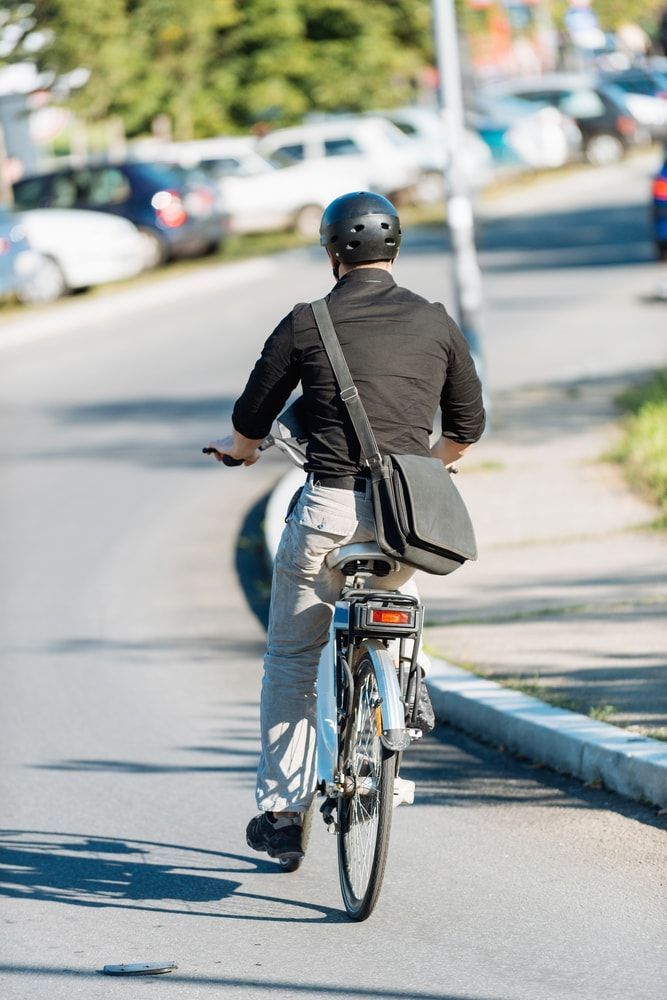
When most people think of cyclists, they often envision sleek, lycra-clad body type fitness enthusiasts speeding down the road or hobbyists leisurely pedaling through the park. This stereotype paints a picture of cycling as primarily an exercise or a recreational activity.
However, this myth overlooks the diverse and practical reasons why many people choose to ride a bicycle.
Diverse reasons for cycling
- Means of Transportation: Many cyclists use their bikes as a primary means of transportation to and from work, school, or other daily activities.
- Environmental concerns: A growing number of cyclists choose to bike to reduce their carbon footprint and contribute to a greener planet.
- Health necessity: Some individuals might have health conditions that make cycling a preferred form of low-impact exercise.
- Accessibility: In urban areas with heavy traffic, cycling is often faster and more convenient than driving or taking the bus.
- Lifestyle choice: For some, cycling is integrated into their lifestyle and daily routine, reflecting personal values and priorities.
- Low-income individuals: Cycling provides a low-cost transportation option for those who cannot afford the expenses associated with car ownership. Many students use bicycles as an economical way to travel between home, campus, and other activities.
Looking for Support on Cycling Safety and Rights? Bike Legal Can Help
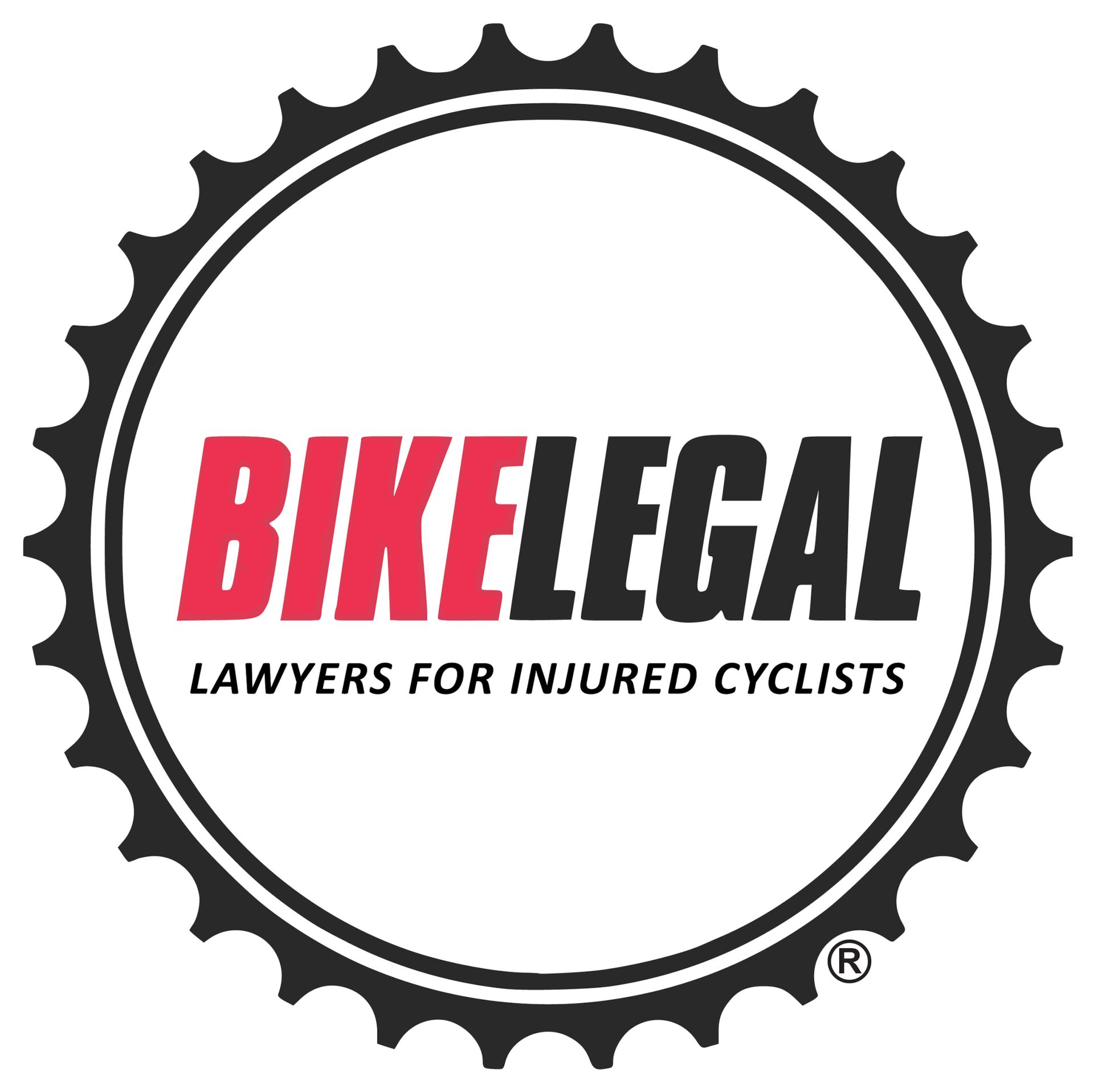
In debunking the common myths about cyclists and addressing driver complaints, many of the perceived issues stem from misunderstandings and miscommunications on the road.
Cyclists are often unfairly blamed for road hazards and accidents when, in fact, distracted driving and a lack of awareness are significant contributing factors. Responsible cyclists adhere to safety practices, such as wearing helmets, using lights, and obeying traffic laws, which help ensure their safety and that of others around them.
Key takeaways:
- Cyclists do contribute to road funding through various taxes.
- Bicycles have legal rights to use the road, and cycling promotes environmental and health benefits.
- Safety measures and legal protections for cyclists are crucial for reducing accidents.
- Understanding and patience from drivers and cyclists can lead to safer road sharing.
As we continue to advocate for safer and more inclusive roads, it's important to challenge these myths and promote awareness. At Bike Legal, our team of bicycle accident attorneys are cyclists themselves, deeply rooted in the cycling community, and committed to promoting safety through education.
With unparalleled resources, a track record of superior results, and 24/7 personalized access, we are here to aggressively defend your rights and seek the compensation you deserve.
Contact us today for a free case review, and let us help you navigate the complex legal system.
Don't wait, call Bike Legal at 877-BIKE LEGAL now.
